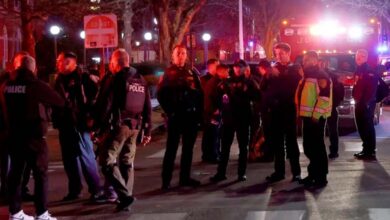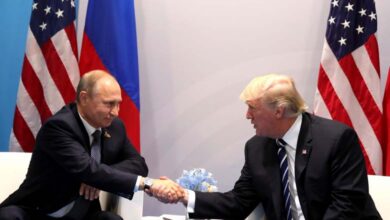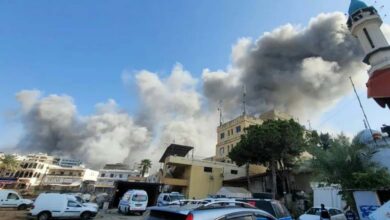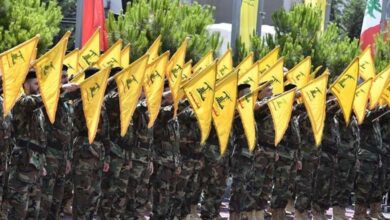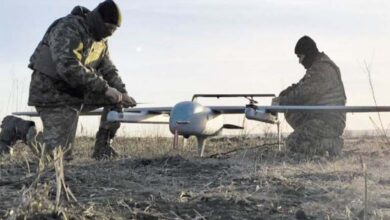Thirty years of pursuing him inside Hezbollah… How did Israel reach al-Tabtabai?

For three decades, the name Haitham al-Tabtabai has echoed through the corridors of Israeli intelligence as an unbroken thread running through Hezbollah’s internal structure.
According to Yedioth Ahronoth, the research division of the Israeli Military Intelligence Directorate tracked Haitham Ali al-Tabtabai for nearly 30 years until he was appointed Chief of Staff of Hezbollah.
When operational conditions aligned for targeting him, experts were clear: the opportunity had to be seized. That is precisely what happened on the 23rd of this month, when an Israeli airstrike targeted him in the southern suburbs of Beirut.
-
One year after the end of the war… 669 Israeli strikes in Lebanon and 360 Hezbollah fighters killed
-
Winter fog hides what is most dangerous: Israeli drill amid Hezbollah retaliation fears
Who is Haitham al-Tabtabai?
Lieutenant Colonel “Y”, head of the Lebanon desk within the Military Intelligence Directorate’s research division, said in an interview with Yedioth Ahronoth that Haitham Ali al-Tabtabai was among the most prominent remaining figures in Hezbollah, describing him as a central figure for 30 years.
He added that al-Tabtabai “led the process of rehabilitating the group following the ceasefire that came into effect on November 27 last year”.
-
Washington bets on drying up Hezbollah’s funding sources to force it to lay down its arms
-
Hezbollah’s knockout strike strategy falters amid Israeli divisions
He “also worked with Iran to bring in additional equipment and capabilities, and rebuilt Hezbollah’s organizational structure”.
According to Lieutenant Colonel Y, al-Tabtabai rose through Hezbollah’s field ranks and played key roles in the organization’s headquarters.
He led the Radwan unit as well as other units responsible for the group’s links with networks within the axis in Iran, Syria, Iraq and Yemen.
-
From drones to smart munitions: how is Hezbollah rearming itself?
-
Hezbollah responds to the November deadline and signals its commitment to keeping its weapons
The perfect timing
The Israeli newspaper notes that the Military Intelligence Directorate monitored al-Tabtabai for many years, but through routine surveillance, typical for a figure of his stature.
This changed when he was appointed Chief of Staff of Hezbollah, which increased interest in him.
During the war, his role evolved: he emerged as an offensive commander who consistently favored the use of force.
-
From Disarmament to Rearmament… Hezbollah Moves as Israel Loses Patience
-
Israel announces the killing of a Hezbollah commander: the logistics support chief
Lieutenant Colonel Y explains: “He assumed positions that strengthened his influence within Hezbollah’s decision-making forum. With his appointment as Chief of Staff, his stature grew until he became the key voice, the number one military target. When a unique operational opportunity was identified, we recommended exploiting it in coordination with the research, operations and air force units”.
What does al-Tabtabai’s death mean?
Lieutenant Colonel Y clarifies that the operation did not only eliminate a military commander of Hezbollah but also one of its most important information hubs, deeply involved in attacks against Israel.
-
Israeli Airstrikes on Lebanon’s Bekaa and North: Hezbollah Infrastructure and Missile Sites Targeted
-
Washington warns of potential Israeli unilateral action if Hezbollah is not disarmed
He noted that al-Tabtabai was at the height of Hezbollah’s military activity, its rearmament and its preparation for a future war. “From our perspective, there was no more suitable time to eliminate him”.
Following every assassination of Hezbollah leaders, the division reviews potential successors, studies their profiles and submits recommendations to the political leadership. “We have monitored Nasrallah’s potential successors for many years. Throughout our service, we consistently identified possible heirs. The goal is always to determine who has the potential and to push for eliminating anyone who poses a threat”.
-
A warning to Hezbollah: Israel’s largest drill on the Lebanese border since October 7
-
After the Gaza Agreement… Receding Justifications and Rising Pressure to Disarm Hezbollah
How does Israel monitor potential heirs in Hezbollah?
Since al-Tabtabai’s death, the division has already identified several possible candidates within Hezbollah for the role of Chief of Staff. Lieutenant Colonel Y says: “We also see the need to further neutralize targets that may seek to violate the ceasefire, strengthen themselves, and push Hezbollah into positions in sharp conflict with our interests. We also prepare for the day after”.
He notes that his branch, responsible for examining Hezbollah’s force structure, has monitored developments on the Lebanese front since the 1970s and 1980s.
-
Israeli army announces elimination of two Hezbollah commanders
-
Disputes shake Hezbollah’s media apparatus and turn into a power struggle
For decades, in peacetime and wartime alike, the division has conducted military research on Hezbollah, its structure, leaders and plans for building and deploying force.
“What we do daily is monitor Hezbollah comprehensively. Today, we are capable of drawing a highly accurate picture of its leadership, individuals and internal dynamics”.
The million-piece puzzle
The aim of the division, Lieutenant Colonel Y explains, “is to make the enemy constantly feel the presence of the Israeli army”.
-
Millions for Information on a Hezbollah Financier: Who is Ali Qasir, Wanted by Washington?
-
Hezbollah Cell in Syria: Details of the Terrorist Plot and Heavy Weapons Seizure
“We succeed in getting close enough to targets to neutralize them, and that is exactly what we want them to feel. The public hears about us only during assassinations or major operations, but we have been in a continuous race for 43 years — since Hezbollah’s founding until today”.
The greatest challenge, he says, is “understanding Hezbollah’s narrative over the past two years, its willingness to initiate the use of force and conduct offensive operations, in addition to understanding its role within the resistance axis and how it coordinates with other actors — Palestinians, Iranians, Houthis, Iraqis and others”.
He concludes by noting that dozens of members of the division, both active-duty and reserve soldiers and officers, work day and night to assemble “the million pieces of the puzzle that form the intelligence picture of Hezbollah — and that is what produces success”.



